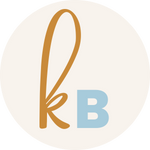Relax Your Face!
5 ways to relieve jaw, neck, and face tension
Sometimes I link to products I love. As an Amazon Associate, I earn a commission from qualifying purchases.
When you think about the places in your body where you carry stress and tension, what comes to mind? If you’re like my clients, you’ll probably include “neck and shoulders” in your answer.
But what about your face?
It’s probably stressed out too!
Think about the facial expressions you make when you’re feeling anxious or stressed out. It’s easy to forget that muscles are making your face move that way.
Just like any other muscle in your body, your facial muscles can get overused, strained, or weak. They also might just feel “tight.”
These self-massage techniques and exercises can help you relax your face and feel greater ease in your upper body as a whole.
01: Eye Release
Our eyes mostly do close range work. Whether reading a book, working on the computer, or having coffee with a friend, our eyes are really only focusing a few feet in front of us at the most. To focus on images at close range, the ciliary muscles in the eyes stretch like a rubber band.
Just like with any other muscle, repeated use in the same range of motion can cause strain. And eye strain doesn’t only affect your eyes—it can also contribute to tension headaches and neck pain.
To focus on images at a distance, however, the ciliary muscles in the eyes slacken (imagine a rubber band at rest).
Give your eyes a break by looking at things that are further away. A good rule of thumb is to practice the 20-20-20 rule: Every 20 minutes, spend 20 seconds looking at least 20 feet away.
In this post, I explain why the 20-20-20 rule is a great baseline exercise AND I share 8 more exercises for reducing eye strain.
Freak out or Jaw Release? ©KindBody Movement, LLC
02: Jaw Release
Jaw pain and dysfunction is no joke. Some folks have jaws that are too tender to massage. Thankfully, we can affect the jaw without actually touching it.
A muscle called the temporalis runs from the temples down to the mandible (the bone which holds your bottom row of teeth). As a result, rubbing your temples could help relax your jaw.
How to practice: Situate the heels of your hands in your temples. Press your hands together (like you’re squeezing your head) and then, without sliding over your skin, drag your hands upward, taking out the slack in your tissues. Take a few breaths here. Open and close your mouth. With an open mouth, move your jaw from side to side.
03: Spock Circles
If you’re wanting to switch from stress mode to relaxation mode, you’ll want to make friends with your vagus nerve. It’s the main nerve of your parasympathetic nervous system, which is responsible for things like digestion, heart rate, and immune function.
The vagus nerve runs around the ears—probably why stimulating this area feels so relaxing! Working with your ears can help you relax and release facial tension.
How to practice: May “Spock Hands” by joining your index and middle fingers, and then your ring and pinkie fingers together to make a V. Slide your hands under your ears within the V of your fingers. Without sliding over your skin or hair, drag your skin in slow circles.
Face palm or Thinking Muscle Release? ©KindBody Movement, LLC
04: Thinking Muscle Release
For those of us out there overthinking it! There’s something about even pressure on the forehead that calms the mind.
How to practice: Rest your elbow on your desk and your forehead (at the eyebrow line) on the heel of your hand. Let your neck relax so your head gets heavy. Hopefully you’ll feel that your hand lifts the skin of your forehead towards your hairline. Close your eyes and breathe. Hang out here for as long as you like.
Alternately, you can place your head directly on your desk like this.
05: Just Breathe
Your face might be feeling tight because you’re also stressed out. The physical touch that comes with the other exercises I’ve shared can certainly turn the volume down on stress. So can breathing.
How to practice: Place your hands on the sides of your rib cage, just above your waist. Soften your shoulders away from your ears. Take a few slow, deep breaths. Watch for your rib cage to expand outward into your hands as you inhale and reset back to center as you exhale. The movement of the rib cage should happen naturally and you don’t need to use conscious muscular effort to force it. After 10 slow, comfortable breaths, release your hands and see how you feel.
Conclusion
If you’re experiencing neck and shoulder pain, tension headaches, and jaw pain, you’re probably carrying around some unhelpful tension in your facial muscles.
These exercises will help you give those muscles some much-needed TLC while also turning down the volume on your stress response.
For the most part, your facial tension is probably caused by underlying stress. As a result, general stress management techniques like meditation, exercise, and other self-care practices will also help you find relief. The video below is a good place to start.








